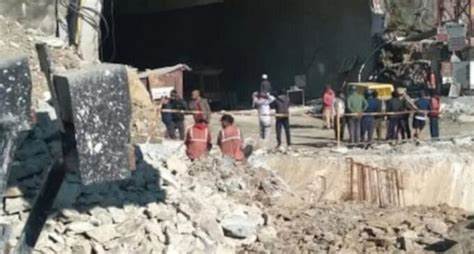Uttarkashi Tunnel Collapse: Serious Lapse? Escape Route Planned But Not Executed

Uttarkashi Tunnel Collapse: Serious Lapse? Escape Route Planned But Not Executed
The reported absence of an escape route in the under-construction Silkyara tunnel in Uttarkashi, Uttarakhand, raises serious concerns about safety protocols and compliance with standard operating procedures. The revelation that the escape route was not included in the 4.5-km tunnel, despite being part of the original design, suggests a significant lapse in construction practices.
Standard operating procedure mandates the inclusion of an escape route inside tunnels exceeding 3 km in length to ensure the safety of workers and facilitate rescue operations in the event of accidents or natural calamities. The alleged failure to adhere to this safety requirement could have had severe consequences for the 41 workers trapped inside the collapsed part of the tunnel.
The emergence of a map highlighting this alleged lapse by the construction company underscores the need for a thorough investigation into the construction practices and compliance with safety regulations. The findings of such an investigation will likely have implications for accountability, regulatory oversight, and the overall safety standards in infrastructure projects.
As the situation unfolds, official statements from authorities and the construction company, along with the results of any investigations conducted, will provide a clearer understanding of the circumstances leading to this lapse and its impact on the rescue efforts and worker safety.

The emergence of a map displaying the original design of the 4.5-km Silkyara tunnel, which includes an escape route, further underscores the alleged lapse in construction practices. The fact that the escape route was part of the initial design but not executed during construction raises serious questions about adherence to safety standards and protocols.
Escape routes are critical safety features in tunnels, providing a means of rescue for individuals in the event of emergencies such as collapses or natural disasters like landslides. The absence of the executed escape route in the Silkyara tunnel has resulted in a challenging situation for the rescue and relief teams, who are now compelled to devise alternate plans to extract the trapped laborers.
The current rescue efforts involve drilling into the rubble and inserting pipes through which the workers can be rescued. The absence of a pre-constructed escape route complicates the rescue operation and emphasizes the importance of strict adherence to safety guidelines in infrastructure projects.
As the investigation into this alleged lapse progresses, it will be crucial to determine the reasons behind the failure to execute the escape route and to identify any shortcomings in oversight and compliance with safety regulations. The findings of such an inquiry will likely have implications for the construction company involved and may lead to changes in safety protocols to prevent similar incidents in the future.
The rescue and relief operations for the trapped workers in the Silkyara tunnel have entered the seventh day, and the number of workers trapped has been revised to 41. A team from the Prime Minister’s Office (PMO) is on-site to review the ongoing rescue efforts. The team includes Mahmood Ahmed (MoRTH additional secretary), Mangesh Ghildiyal (PMO deputy secretary), geologist Varun Adhikari, and engineering expert Armando Capellan, all of whom are conducting an on-the-spot review of the situation.
However, the rescue operation faced a setback as it was temporarily put on hold due to a machine snag. During the positioning of the fifth pipe at around 2:45 pm on Friday, a loud cracking sound was heard inside the tunnel, prompting the suspension of the rescue operation. The sound caused panic among the rescue team, and the pipe-pushing activity was stopped based on a warning from an expert involved in the project about the possibility of further collapse.
Chief Minister Pushkar Singh Dhami held a meeting with officials to receive updates on the rescue operations at the tunnel in Silkyara. Dhami expressed hope that state-of-the-art machines, both manufactured in the country and abroad, would be successful in the ongoing rescue operations.
The situation remains challenging, and ongoing updates from authorities and rescue teams will provide insights into the progress and any new developments in the rescue efforts.







